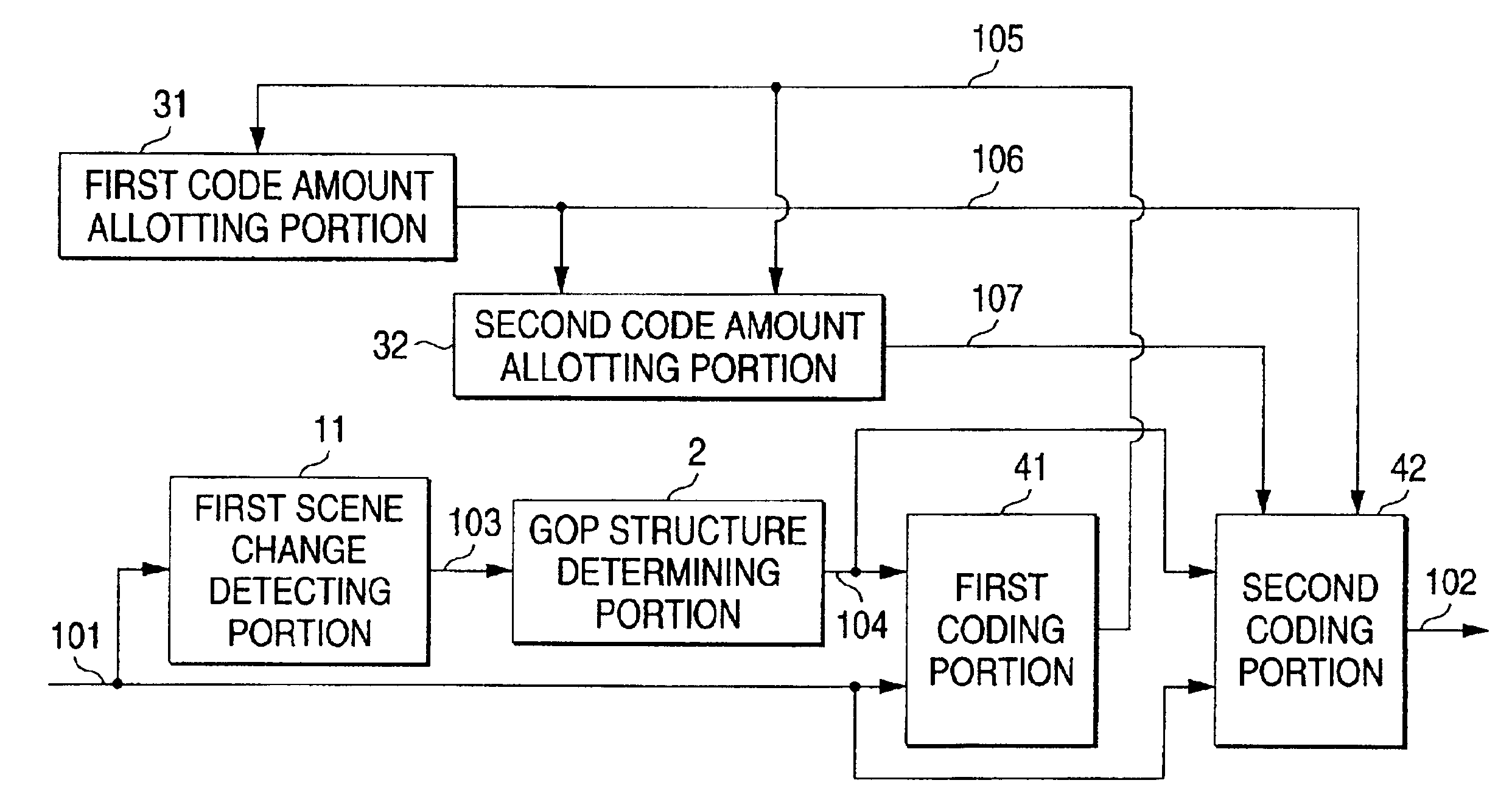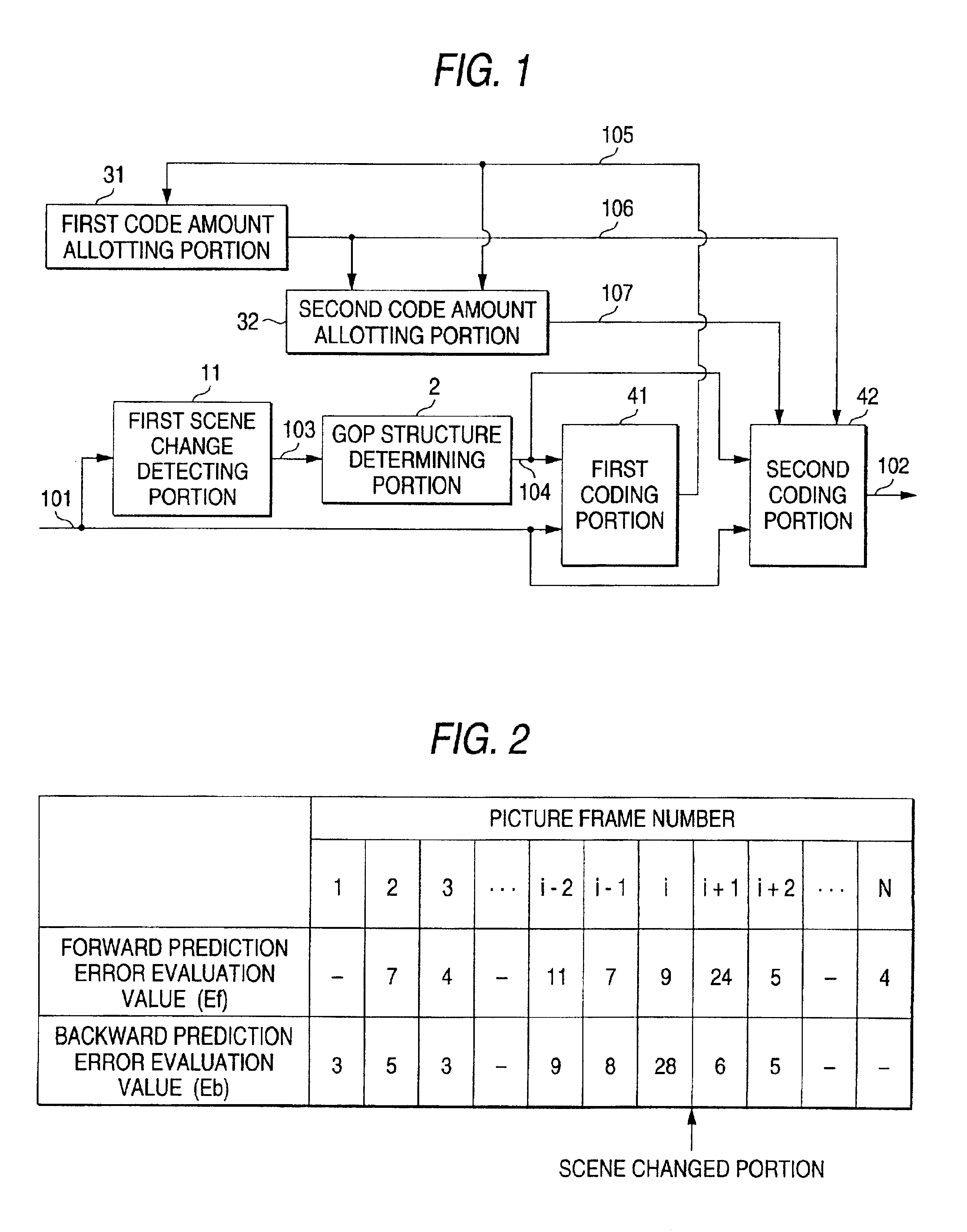Picture coding apparatus, picture coding method, and recording medium having picture coding program recorded thereon
a picture coding and picture technology, applied in the field of picture coding apparatus, picture coding method, and recording medium having picture coding program recorded thereon, can solve the problems of variation in complexity, deterioration of picture quality of coded pictures, and conventional picture coding apparatus not controlling coding mode (or picture type) and the size of gop
- Summary
- Abstract
- Description
- Claims
- Application Information
AI Technical Summary
Benefits of technology
Problems solved by technology
Method used
Image
Examples
first embodiment
[0056]FIG. 1 is a block diagram illustrating a picture coding apparatus that is an embodiment of the present invention. In FIG. 1, reference numeral 11 designates a first scene change detecting portion serving as the scene change detecting means, 2 denotes a GOP structure detecting portion acting as the group structure determining means, 31 and 32 designate first and second code amount allotting portions serving as the code amount allotting means, 41 denotes a first coding portion serving as the preceding means, and 42 designates a second coding portion serving as the coding means.
[0057]In this embodiment, the correlation between picture frames corresponding to an input picture is evaluated. Then, a picture boundary having low interframe correlation is detected as a transition between scenes, namely, a scene change position. The constitution of a GOP is determined according to a result of this detection of a scene change and to the correlation between the picture frames. Moreover, t...
second embodiment
[0128]FIG. 7 is a block diagram illustrating the configuration of another picture coding apparatus according to the present invention. In FIG. 7, reference numeral 43 designates a third coding portion. The rest of the constituent elements of the apparatus are the same as the corresponding elements illustrated in FIG. 1. The third coding portion 43 is a common coding device serving as both the encoder used for preceding and the encoder used for coding. Incidentally, the third coding portion 43 uses a coding parameter used for preceding, which differs from a coding parameter used for coding. That is, parameters respectively corresponding to the coding modes are preliminarily set. Thus, when performing the preceding, the portion 43 uses the preset parameter for preceding.
[0129]With such a configuration, the scale of the apparatus can be decreased. This embodiment is effective especially in the case that real-time processing is unnecessary.
[0130]FIG. 8 is a block diagram illustrating th...
PUM
 Login to View More
Login to View More Abstract
Description
Claims
Application Information
 Login to View More
Login to View More - R&D
- Intellectual Property
- Life Sciences
- Materials
- Tech Scout
- Unparalleled Data Quality
- Higher Quality Content
- 60% Fewer Hallucinations
Browse by: Latest US Patents, China's latest patents, Technical Efficacy Thesaurus, Application Domain, Technology Topic, Popular Technical Reports.
© 2025 PatSnap. All rights reserved.Legal|Privacy policy|Modern Slavery Act Transparency Statement|Sitemap|About US| Contact US: help@patsnap.com



